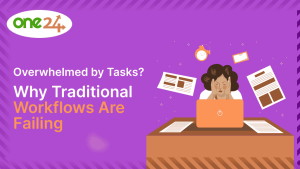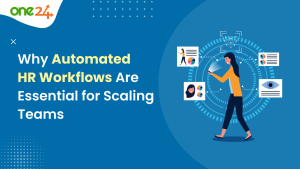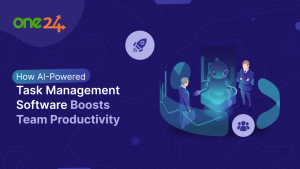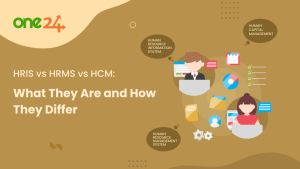As the business ecosystems online become ever more complex, Human Resource Management Systems (HRMS) have become a necessity, not a nice-to-have. HRMS solutions can remove manual efforts, increase employee engagement, and use analytics to make better decisions about human capital management across organizations. However, just like with any new technology investment, it is not just the capabilities that can make or break an HRMS, but also the rollout. If the rollout goes wrong, it can backfire and will be more damaging in wasted resources, confused people, and a lack of faith in digital transformation altogether.
If your organization is looking to invest in or implement an HRMS, this simple guide will take you through the basic steps of a successful and trouble-free HRMS rollout.
Step 1: Define Your Goals and Requirements
Prior to going out to do vendor comparisons and product demonstrations, figure out what your rationale is for going out to purchase an HRMS. Do you want to decrease your administrative burden, consolidate all employee data, improve compliance, or enhance your talent attraction? Establish some specific objectives, and be very explicit about what you expect and say what you want as requirements, not as an option.
Key actions:
- Gather feedback from HR managers and other departments.
- Identify pain points in your current HR processes.
- Define key performance indicators (KPIs) to measure success post-implementation.
Step 2: Build an Implementation Team
Implementing HRMS is a team effort. HR, IT, finance, and occasionally even the legal and compliance departments must coordinate across functional boundaries.
Key actions:
- Appoint a project manager to lead the process.
- Form an internal task force with representatives from relevant departments.
- Assign clear roles and responsibilities to team members.
Step 3: Choose the Right HRMS Vendor
With your requirements and objectives mapped out, you are now ready to start thinking about which vendors to consider. While functionality is important, also think through user experience, scalability, vendor support, integrations as well as compliance requirements.
Key actions:
- Request product demos and use-case walkthroughs.
- Check references and case studies from similar businesses.
- Evaluate the total cost of ownership.
Step 4: Develop a Detailed Implementation Plan
Consider the implementation of HRMS as a project with distinct stages, deadlines, and deliverables. This will keep you organized and lower the possibility of scope creep or delays.
Key actions:
- Break down the implementation into stages – planning, data migration, system configuration, testing, training, and go-live.
- Allocate resources and set realistic deadlines for each phase.
- Develop a risk mitigation plan in case of delays or system issues.
Step 5: Clean and Migrate Your Data
Data migration is one of the most underappreciated phases in the implementation of any HRMS. Inaccurate, redundant, or out-of-date employee data will only make your new system less effective.
Key actions:
- Audit your existing HR data for accuracy and completeness.
- Eliminate redundancies and resolve discrepancies.
- Map old data fields to new ones, and conduct test migrations before finalizing.
Step 6: Configure and Customize the System
Most HRMS Softwares offer field customization, access restrictions, and configurable workflows. Customize the platform to the needs of your specific organization, but don’t get too crazy because that would certainly complicate any updates and support from the vendor.
Key actions:
- Set up user roles, permissions, and approval workflows.
- Configure modules like payroll, performance, recruitment, and leave.
- Ensure integration with other systems, such as accounting or attendance tools.
Step 7: Train Your HR and End Users
No matter how great your HRMS is, its value hinges upon how well your team leverages it. The training must be comprehensive and ongoing, not a one-and-done engagement.
Key actions:
- Provide role-based training to HR staff, managers, and employees.
- Create easy-to-follow user manuals and video tutorials.
- Establish an internal support mechanism for early-stage troubleshooting.
Step 8: Test Extensively Before Going Live
Conduct thorough testing prior to full deployment to make sure the system functions as planned and that data is moving through it correctly. Now is the time to find any errors in configuration, integration, or bugs.
Key actions:
- Conduct user acceptance testing (UAT).
- Simulate real-life HR scenarios to check system responses.
- Validate reports and ensure data accuracy.
Step 9: Roll Out the System
Choose between a phased rollout (modules launched in stages) or a big bang launch (all modules go live at once) based on the size of your company. Share the launch strategy well in advance.
Key actions:
- Announce the go-live date across the organization.
- Provide FAQs, helpdesk info, and real-time support.
- Monitor user feedback and system performance closely during the first few weeks.
Step 10: Monitor, Optimize, and Evolve
Launch is not the end of implementation. To make sure the system keeps meeting organizational objectives, keep a close eye on performance indicators, employee satisfaction, and system usage.
Key actions:
- Collect feedback from users and HR staff.
- Review KPIs set during the planning phase.
- Plan periodic updates, refresher training, and vendor consultations.
The Conclusion
Investing in an HRMS is a significant strategic initiative that can profoundly boost your organization’s HR functions and employee experience. Success, though, is not solely in the product, but also in the process. Through a systematic, well-communicated, and people-focused process, you can guarantee your HRMS implementation is not merely successful but also transmogrifying.
No matter if you are a startup growing rapidly or an enterprise transforming legacy systems, a well-considered implementation approach will enable you to realize the full value of your HRMS investment.







